OK, the time has come – we’re pulling the trigger on bodywork tooling! In order to make this happen we’ve partnered with Lancair Composites in nearby Redmond, Oregon. As I’ve mentioned earlier, getting the tooling and parts done in such a short order is no small feat. Success is by no means assured but with Lancair onboard we have a chance. They’ve been building composite aircraft for some 30 years so they know what they’re doing. Still, we’re trying to get a 6-month job done in 6 weeks.
To create the design, Zukun put in a massive effort starting with my general outline and making it visually pleasing. I’m really happy with how the car is turning out. The goal was to make it closer related to D1/D4, accommodate my through-the-car aero and make it just refined enough – not too much as it’s still a raw track-oriented (but street capable) car, but much more so than the current version. I think it’s spot on now. Some quick pictures below, better renderings coming soon.
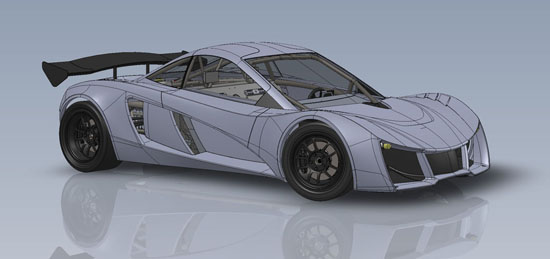
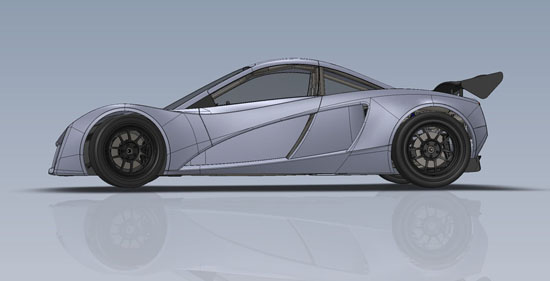
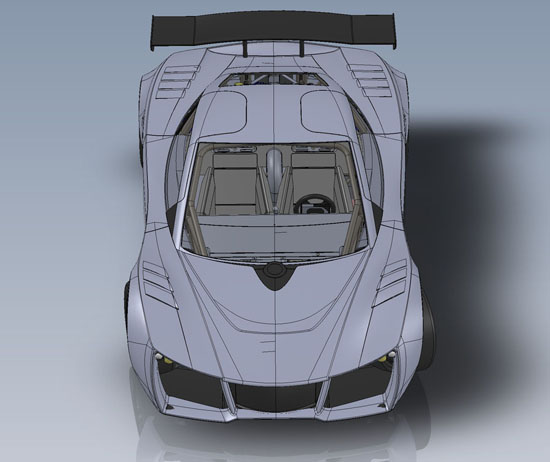
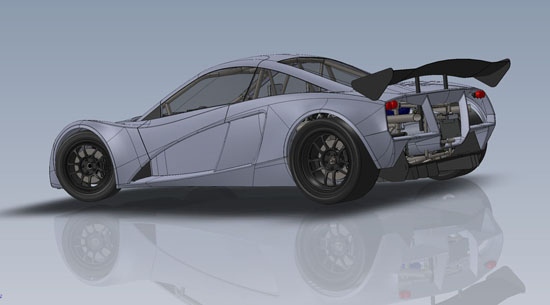
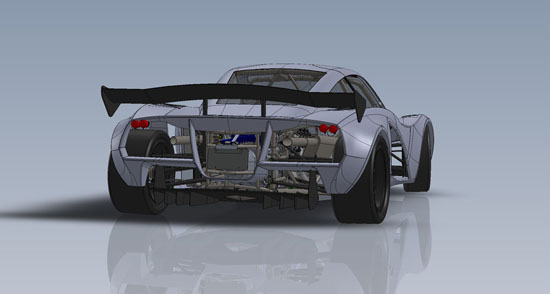
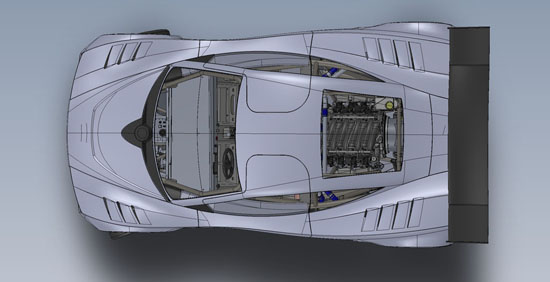
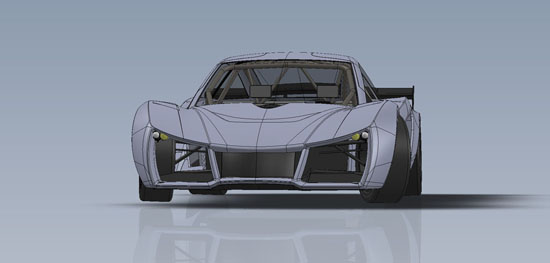

For tooling we’ve decided to go with urethane foam machined on Lancair’s 3-axis router. This means taking the raw 3D solid, fitting it optimally into available sizes of foam blocks (keeping in mind the operating envelope of the machine), then tweaking everything until a manufacturable part is achieved. Below is an example of a mold plug (pattern) that will make both lower door skins. Green is the eventual part surface.
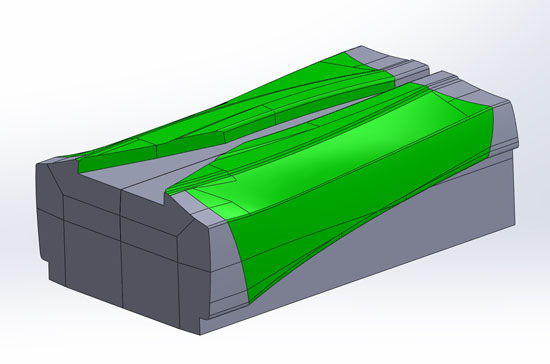
It’s a sequential process – only one pattern can be machined at a time. However there are many steps for each part. First the program has to be created in CAM software, then the foam is machined slightly undersize. After that fiberglass and surface putty is applied, then the part goes back into machine for final surfacing. After that it’s hand finished, primered (repeat as necessary), prepped, flanged, and then molds are made. The good thing is that once we start, many molds can be in various stages simultaneously. So if we’re efficient at planning and ‘fill the pipe’ effectively, the total time to produce all the pieces can be much less than the sum of the times necessary to make each one. This is what we’re counting on.
The door mold CAD has already been turned over to Lancair and material has been ordered. Now I’m working on detailing out the remaining parts. The nose ‘liner’ is a good example. Zukun delivered the basic shape:
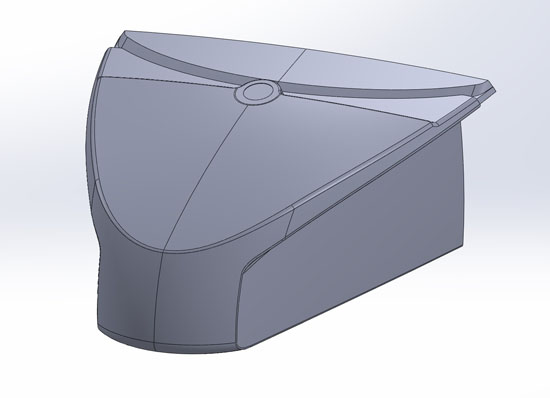
To this I now need to add all the various features – interface to the front wing, openings for suspension and service access, rain gutters, location for windshield wiper and so on.
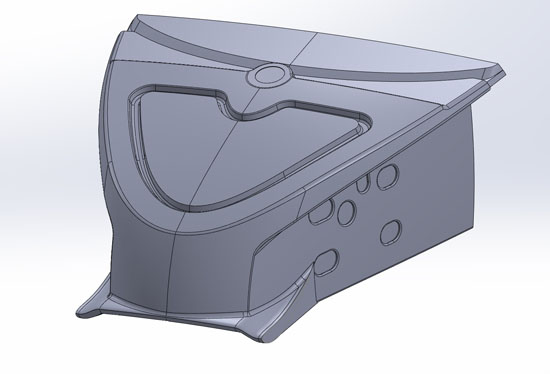
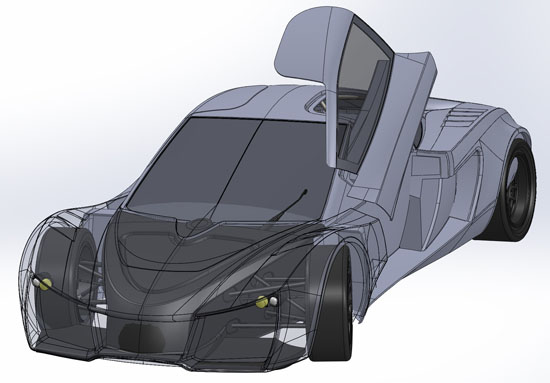
The wiper is a particularly interesting challenge because it needs to use available parts, provide reasonable coverage and fit with the frame, bodywork and all the other surrounding components. Below is an illustration of how I go about solving the problem. Solidworks is an awesome tool for this. Its parametric nature lets me tweak and adjust things on the fly. The software does all the calculations so I can make it a real-time interactive process which goes pretty quickly.
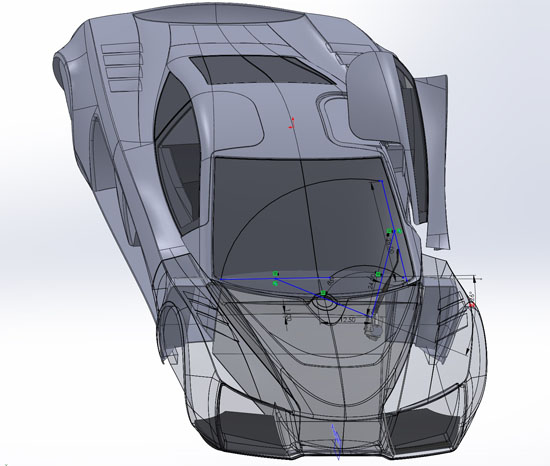
We’re definitely in crunch mode. It’s both stressful and exciting – pretty much like every day of the 6.5 years of the company’s existence has been 🙂 Bring it on.

